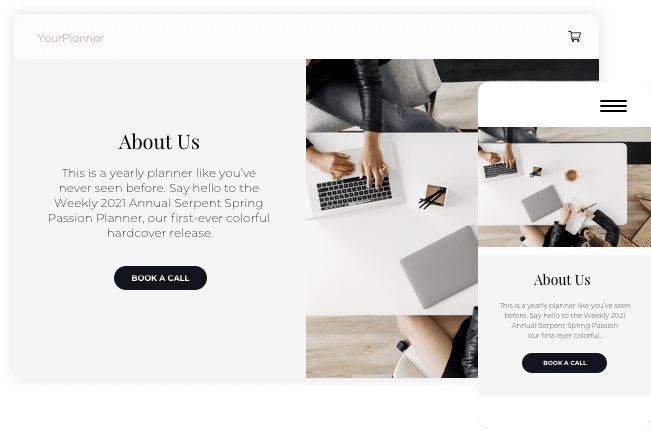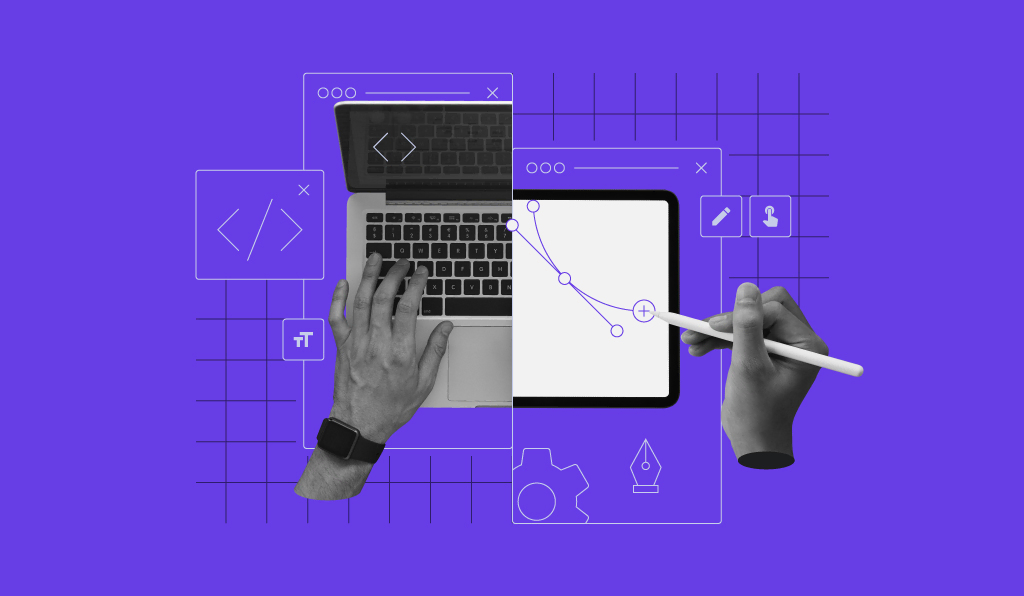Discover the Different Kinds Of Internet Style Solutions for Your One-of-a-kind Needs
From receptive internet design that adapts to various tools, to ecommerce internet layout that drives online sales, to individual experience (UX) layout that enhances client contentment, to customized web layout that brings your vision to life-- the opportunities are unlimited. Whether you're a little organization proprietor looking to establish an on the internet existence or a business owner intending to revolutionize the mobile app world, this conversation will certainly lose light on the various types of web design services offered, assisting you make an enlightened choice that aligns with your goals.
Responsive Website Design
Responsive website design is a critical aspect of modern web development that guarantees sites adapt and show perfectly across different gadgets and screen sizes. With the enhancing use of smartphones, tablets, and other mobile phones, it has actually come to be essential for websites to be user-friendly and accessible on any kind of display.
Receptive website design uses a mix of adaptable grids, designs, pictures, and CSS media inquiries to achieve this adaptability. It permits the web site to immediately adjust its layout and web content based upon the device's display dimension, resolution, and orientation (web design services). This suggests that customers can access the site on their desktop, laptop computers, tablet computers, or smartphones without encountering any type of problems or needing to focus or out to check out the content correctly

E-commerce Internet Style

With the increasing demand for on the internet buying, businesses are now concentrating on ecommerce internet style to create user-friendly and visually attractive web sites that drive sales and enhance the customer purchasing experience. E-commerce web layout encompasses numerous aspects such as format, navigation, product screen, and checkout process optimization. These elements are essential for bring in and retaining consumers, as well as raising conversion rates.
An efficient e-commerce website design begins with a well-organized layout that permits users to quickly locate the items or services they are seeking. User-friendly and clear navigation menus, search bars, and filtering system alternatives are vital for a smooth surfing experience. Additionally, the item screen should showcase premium pictures, detailed descriptions, and customer evaluations to construct trust and self-confidence in the product.
Additionally, the check out process need to be maximized for simplicity and ease. A streamlined and secure repayment gateway, along with numerous settlement choices, makes sure a smooth transaction for the client. In addition, integrating attributes such as visitor check out, order monitoring, and tailored recommendations can enhance the overall buying experience.
User Experience (UX) Design
User Experience (UX) Layout plays an essential function in creating appealing and user-friendly internet sites that prioritize the demands and choices of the target audience. It involves making and enhancing the overall experience that customers have when connecting with a site or application. UX designers aim to enhance user fulfillment by boosting the use, access, and performance of the site.

UX developers concentrate on producing user-friendly navigation, clear and concise material, and aesthetically attractive interfaces. They ensure that the site is simple to understand and navigate, making certain a satisfying and seamless user experience.
In addition to boosting use, UX design also considers the psychological element of customer experience. Designers intend to stimulate favorable emotions via visual components, such as colors, typography, and imagery, which add to the overall individual fulfillment.
Custom Web Design
Custom internet style entails developing distinct and custom-made websites that are specifically created to meet the private requirements and requirements of a service or organization. Unlike pre-designed layouts or common website designs, custom-made website design uses an individualized approach that reflects the brand identification, values, and goals of the customer.
With customized internet layout, every element of the site is thoroughly crafted to align with the client's objectives. This includes the design, color pattern, typography, photos, and general user experience. The style process starts with a detailed understanding of the customer's company and target market, allowing the web developer to establish a site that properly interacts the customer's message and engages users.
Among the key advantages of custom-made web design is its adaptability. As the website is constructed from the ground up, the web designer has total control over its functionality and functions. This makes it possible for the combination of any kind of preferred modifications, such as ecommerce functionality, web content administration systems, or interactive elements.
In addition, personalized website design guarantees that the site is enhanced for internet search engine, making it extra noticeable to prospective clients. By executing search engine optimization ideal techniques, such as correct keyword placement and meta tags, the website can attain higher positions in internet search engine results.
Mobile App Style
Mobile application layout involves producing straightforward and aesthetically appealing interfaces for applications that are especially created for smart phones. With Click This Link the boosting appeal This Site of smart devices and tablets, mobile app style has actually become an important element of digital product growth.

Visual appeal is also essential in mobile app layout. The use of shades, typography, and imagery can develop an aesthetically pleasing interface that captures the customer's interest and boosts their general experience. Furthermore, including brand elements and maintaining consistency with the company's visual identity can assist develop a solid brand name existence within the app.
Mobile application layout additionally entails considering different technical facets, such as gadget performance, responsiveness, and compatibility optimization - web design agency. It is vital to guarantee that the application functions flawlessly throughout different tools and operating systems, giving a regular experience to all users
Conclusion
Receptive internet layout makes certain a seamless experience across different devices, while ecommerce web layout focuses on creating online shopping systems. Custom web layout supplies tailored remedies to satisfy certain needs, while mobile application layout concentrates on developing straightforward mobile applications.
From responsive web design that adapts to various tools, to e-commerce web style that drives on the internet sales, to user experience (UX) style that boosts consumer satisfaction, to custom web design that brings your vision to life-- the possibilities are unlimited.An effective ecommerce web design begins with a well-organized format that permits users to conveniently find the items or solutions they are looking for. The style process begins with an extensive understanding of the customer's organization and target audience, allowing the web designer to develop an internet site that efficiently communicates the client's message and engages users.
Receptive web style makes certain a smooth experience throughout different tools, while e-commerce web design focuses on creating online shopping platforms. Custom web layout supplies tailored solutions to fulfill specific requirements, while mobile application style concentrates on creating straightforward mobile applications.